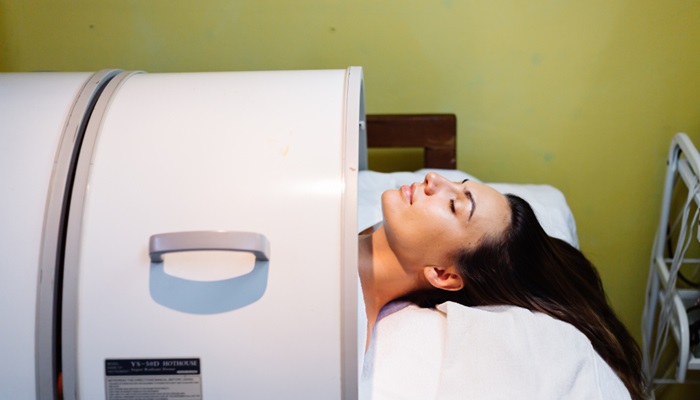Breast MRI is an imaging examination aimed at detecting breast cancer. However, it is also used to identify other potential breast issues, such as benign tumors.
This examination provides a more detailed image of the breast structure, aiding doctors in making an accurate diagnosis.
What is a Breast MRI?
Breast MRI (Magnetic Resonance Imaging) is an imaging procedure that uses radio waves and magnetic energy to create a detailed picture of breast structures. It is commonly used for the early detection of breast cancer.
Breast MRI may be performed alongside mammography to diagnose breast cancer, especially in individuals at high risk, such as those with a family history of breast cancer.
Benefits of Breast MRI
The primary benefit of a breast MRI is the early detection of breast cancer. It can be conducted along with mammography once a year, particularly for high-risk individuals.
Other benefits of breast MRI include:
- Identifying the cause of breast lumps or other breast cancer symptoms
- Determining the spread and staging of breast cancer
- Evaluating the condition of breast implants
- Assisting in selecting the appropriate treatment for breast cancer
When Should You Have a Breast MRI?
A breast MRI is most appropriate for individuals with a high risk of breast cancer.
Doctors may recommend a breast MRI if:
- There is a possibility of a ruptured or leaking breast implant
- You have a high risk of breast cancer
- A close family member has had breast or ovarian cancer
- You have dense breast tissue
- You have a breast abnormality that may be cancerous
- You carry BRCA1 or BRCA2 genetic mutations linked to breast cancer
- You have undergone chest radiation therapy between the ages of 10-30
Breast MRI does not replace mammography. Instead, it is often performed alongside mammography for a more comprehensive evaluation.
Additionally, a breast MRI is best scheduled at the beginning of the menstrual cycle, around days 5-15, or after menstruation and before ovulation. For postmenopausal women, the test can be done at any time.
Breast MRI Procedure
In general, preparing for a breast MRI is similar to other MRI procedures. You should inform your doctor or medical staff if you have implanted medical devices made of metal, such as a pacemaker, cochlear implant, surgical clips, or screws, as these may affect the results or interfere with the machine.
Breast MRI Procedure Steps:
- You will be asked to wear a hospital gown and remove all metal accessories, including jewelry, underwire bras, and glasses.
- If the MRI is being conducted to examine breast implants, a contrast dye will be injected.
- You will lie face down on a special table with openings designed for your breasts.
- Once positioned, the table will slide into the MRI machine, and the scan will begin.
- If contrast dye is used, it will be injected after the initial scanning sequence.
- You must remain still during the scan to ensure clear images.
- Once the scan is complete, the staff will remove the IV for contrast and cover the injection site with a bandage.
During the procedure, you can communicate with the staff in the control room.
Since the MRI machine can be noisy, you will usually be given earplugs. If you have claustrophobia, inform the staff beforehand. They may provide mild sedation to help you stay relaxed.
Results
A breast MRI can detect small breast tumors that might not appear on a mammogram. Doctors interpret breast MRI results using a standardized system called the Breast Imaging Reporting and Data System (BI-RADS), which categorizes findings from 0 to 6:
- BI-RADS 0 (Incomplete): Further tests are needed to confirm the results.
- BI-RADS 1 (Negative): No abnormalities detected.
- BI-RADS 2 (Benign): No signs of malignancy (non-cancerous).
- BI-RADS 3 (Probably Benign): Less than 2% chance of malignancy.
- BI-RADS 4 (Suspicious for Malignancy): Possible signs of cancer.
- BI-RADS 5 (Highly Suggestive of Malignancy): More than 95% chance of cancer; further action is needed.
- BI-RADS 6 (Known Biopsy-Proven Malignancy): A confirmed cancerous mass with biopsy results.
However, breast MRI can sometimes produce false-positive or false-negative results. Therefore, additional tests may be required to confirm findings.
Risks
Unlike X-ray-based imaging, breast MRI does not expose patients to radiation, making it a relatively safe procedure.
Potential risks include:
- Allergic reactions to the contrast dye
- A metallic taste in the mouth due to the contrast agent
- Bruising at the injection site, which usually resolves in a few days
If you are breastfeeding, it is recommended to avoid nursing for 12-24 hours after receiving a contrast-enhanced MRI.
While often used for cancer detection, breast MRI can also be part of a routine annual medical check-up, especially for those at high risk. Regular screenings improve the chances of detecting cancer early, leading to more effective treatment.
Consult your doctor to determine whether a breast MRI is necessary for you. You can also schedule a breast cancer screening package at Mandaya Royal Hospital through Preventive Health Care by making an appointment via WhatsApp, Book Appointment, or by downloading the Care Dokter app on Google Play and the App Store.



